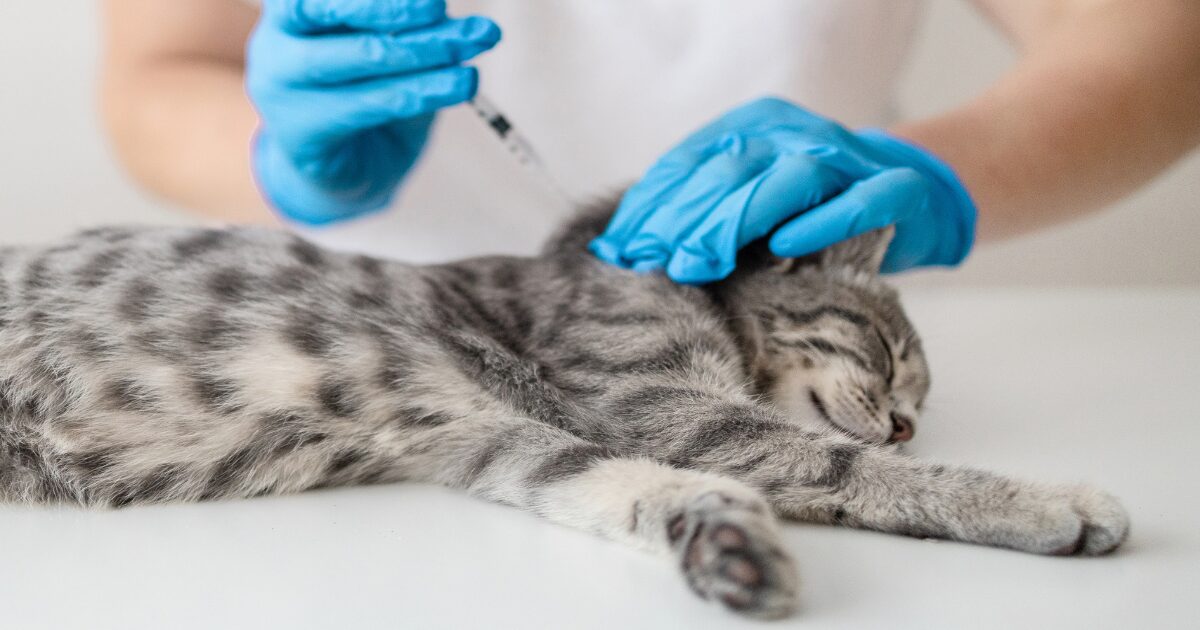Pet Sitting vs Pet Boarding
Introduction
As pet owners, our pets are much more than just animals—they are cherished members of the family. From the moment we bring them home as puppies or kittens, they become a constant source of joy, companionship, and unconditional love. But just like us, as pets grow older, their needs change. Senior pets, in particular, face a host of challenges—physical, emotional, and even cognitive—that require a higher level of care. Their energy levels slow down, their joints may ache from arthritis, and they may develop medical conditions that require careful management and attention. This means that caring for senior pets is not just about feeding them and giving them a roof over their heads; it’s about ensuring that their golden years are comfortable, stress-free, and filled with love.
The Dilemma: Pet Boarding vs. Pet Sitting for Senior Pets
When it comes to leaving your senior pet in someone else’s care while you’re away, the decision becomes even more critical. Many pet owners are familiar with traditional pet boarding vs pet sitting, but when it comes to senior pets, the stakes are higher. A standard boarding facility may not be equipped to cater to the specific needs of an older pet, whereas personalized pet sitting can offer the kind of care and attention that senior pets truly need. As a responsible pet parent, you want to ensure that your senior pet is not only safe but also happy and healthy in your absence.
What’s Best for Your Senior Pet?
So, what’s the best choice for your senior companion? Do you opt for pet boarding vs pet sitting, or is there another option that can offer the tailored care your senior pet requires? In this article, we’ll delve into the top 5 reasons why senior pets need personalized care, and we’ll explore how pet sitting vs pet boarding stacks up when it comes to providing comfort, emotional well-being, specialized medical attention, and a stress-free environment for your senior pet.
Why It Matters: Sensitivity to Routine and Environment
Whether you’re a first-time pet owner or a seasoned pet parent to an aging furry friend, understanding the differences between pet boarding and pet sitting is essential. Senior pets are more sensitive to changes in routine, and they need care that’s gentle and specifically suited to their needs. This article will guide you through the advantages of pet sitting for senior pets and explain why it often offers a superior solution compared to traditional boarding.
Making the Right Choice: Prioritizing Your Pet’s Comfort
In addition, we’ll break down the benefits of personalized care, so you can make an informed choice that prioritizes your pet’s comfort and happiness. No matter what, the most important thing is that your senior pet feels safe, loved, and well-cared for—whether you’re traveling for a weekend getaway or a longer trip. By the end of this article, you’ll have all the information you need to decide between pet sitting vs pet boarding, and ensure that your senior pet enjoys their time apart from you just as much as you enjoy your time away.
1. Why Personalized Care is Crucial for Senior Pets: Pet Sitting vs Pet Boarding

When it comes to caring for senior pets, personalized care isn’t just a luxury—it’s a necessity. As pets age, they often develop health conditions like arthritis, dental issues, and even cognitive decline. These changes can cause discomfort and stress, making it essential to choose a care provider who can cater to your pet’s specific needs.
In pet sitting vs pet boarding, the biggest difference lies in the level of individualized attention your senior pet receives. Boarding facilities, while great for more energetic pets, often house animals in shared spaces with multiple staff members. In such settings, older pets may not get the same level of attention and monitoring they require. A busy boarding facility can be overwhelming, especially for senior pets who might be more sensitive to noise and commotion.
On the other hand, pet sitting offers a far more personalized approach. When you opt for a pet sitter, your senior pet stays in the comfort of their own home, surrounded by familiar sights, sounds, and smells. This environment is much less stressful for older pets, who may already be dealing with discomfort from aging joints or medical conditions. Furthermore, a pet sitter can focus exclusively on your senior pet, ensuring they get the attention and care they need—whether that means additional rest periods, slower-paced walks, or even extra cuddles.
This level of attention is especially important for pets with special needs or those suffering from cognitive dysfunction. Senior pets may also have specific dietary restrictions or require medication at certain times. With pet sitting, these details can be carefully managed without the distractions and limitations of a boarding facility.
In the end, personalized care ensures that your senior pet is treated as an individual, with their own unique needs and routines in mind. Whether it’s helping them get on and off furniture or providing a more calming atmosphere, pet sitting wins hands down when it comes to meeting the specific needs of senior pets.
2. The Comfort Factor: How Pet Sitting vs Pet Boarding Offers Different Levels of Care

Comfort is one of the biggest factors when it comes to choosing between pet sitting vs pet boarding for your senior pet. Aging pets often experience stiffness, reduced mobility, or other physical limitations that make comfort a top priority. The question is: which option provides a better experience for your pet’s physical well-being?
Pet boarding facilities are often bustling with activity. While they are equipped to care for a large number of animals, the environment can be quite chaotic, especially for senior pets. For instance, many boarding facilities house pets in shared kennels or rooms, which can be noisy and overwhelming. This can be a stressful situation for a senior pet who is used to a more quiet and comfortable home environment. Furthermore, boarding accommodations are generally standardized, meaning your pet will be placed in a generic space that might not meet their specific needs.
Pet sitting vs pet boarding takes a sharp turn here, as pet sitting offers your senior pet the comfort of staying in their own home. Home provides familiarity, and that familiarity is key for older pets, who may feel anxious when taken out of their environment. Whether it’s their favorite spot on the couch or the comfort of their own bed, being in their own home allows them to relax and settle without the stress of a new, unfamiliar space.
Pet sitters can also cater to your pet’s comfort in a way that a boarding facility cannot. They can adjust your pet’s environment to accommodate their physical limitations. For example, if your senior pet struggles to climb stairs, a pet sitter can ensure they stay on the ground floor, making their daily routine much more comfortable. Additionally, pet sitters can control the level of noise and activity, offering a peaceful and calming atmosphere for your senior pet.
3. Specialized Attention for Medical Needs: Pet Sitting vs Pet Boarding for Healthier Aging

As pets age, they often develop medical conditions that require regular monitoring and specialized care. Senior pets may need medication, special diets, or extra attention to certain health concerns. Whether it’s arthritis, diabetes, or heart disease, aging pets have unique medical needs that need to be addressed consistently and with great care.
In the pet sitting vs pet boarding debate, pet sitting often stands out when it comes to handling specialized medical needs. Many senior pets require medication on a regular schedule—whether it’s an oral pill, insulin injection, or topical ointment. Boarding facilities may not always offer the personalized care necessary to handle these medical requirements. Staff at boarding facilities generally have multiple animals to care for, which means they may not be able to administer medications exactly as needed or follow strict dietary guidelines.
Pet sitters, however, are focused solely on your pet during their visits, allowing them to take the time to manage your pet’s medical needs with precision and care. They can administer medication at the exact times prescribed, adjust feeding schedules based on your pet’s specific needs, and monitor their health for any changes. This close attention ensures that your senior pet stays on track with their health plan and remains as comfortable as possible.
Additionally, pet sitters are often more willing to follow specific instructions tailored to your pet’s condition. This level of care is particularly crucial for senior pets who may be experiencing ongoing health issues that require constant monitoring and management.
4. Emotional Well-being: Why Pet Sitting Trumps Pet Boarding for Senior Pets’ Happiness

While physical care is incredibly important for senior pets, their emotional well-being is just as crucial. Aging pets can be more prone to separation anxiety, confusion, and stress, especially when placed in an unfamiliar environment. When considering pet sitting vs pet boarding, emotional comfort should be a major factor in your decision.
For senior pets, the comfort of being in a familiar environment cannot be overstated. Pet sitting vs pet boarding is particularly relevant here, as staying at home allows your senior pet to maintain their routine. They can enjoy their favorite spots, interact with their familiar smells, and continue their usual sleeping patterns without disruption.
In a boarding facility, on the other hand, your senior pet may face emotional turmoil. New sights, sounds, and smells can overwhelm them, potentially triggering anxiety or stress. Older pets, especially those with cognitive issues, may not be able to adjust quickly to new surroundings, causing further discomfort.
Pet sitters offer the ultimate emotional reassurance. They come into your home and provide companionship, help maintain the same routines, and give your pet the extra love and attention they need. Whether it’s sitting with them during nap time or giving them a gentle walk, pet sitters are in tune with your pet’s emotional needs, making sure they’re as happy and relaxed as possible.
5. Flexibility in Scheduling: Pet Sitting vs Pet Boarding for Stress-Free Senior Pet Care

One of the major challenges of traditional pet boarding is the lack of flexibility. Boarding facilities often have set hours for feeding, exercise, and play, which may not align with your senior pet’s unique needs. Senior pets tend to have more specific schedules due to their health conditions, energy levels, and emotional requirements.
In pet sitting vs pet boarding, flexibility is a key advantage that pet sitters provide. They can adapt their visits to match your senior pet’s schedule, whether that means extra bathroom breaks, early morning walks, or more frequent rest periods. Senior pets, especially those with special health needs, may need a more tailored routine than what a boarding facility can offer.
A pet sitter will also be able to provide care on your terms, whether you need visits multiple times a day or just once for a longer stay. This flexibility can be crucial for senior pets who thrive on consistency. Having someone visit at different times, or adjusting their care as needed, allows you to provide the best possible environment for your pet’s well-being.
Conclusion

Choosing the right care for your senior pet is one of the most important decisions you’ll make as a responsible pet owner. While both pet sitting vs pet boarding can offer temporary solutions for when you’re away, the personalized care provided by a pet sitter often stands out as the best option for senior pets. Senior pets have unique needs, and as they age, they become more vulnerable to stress, anxiety, and health issues. That’s why it’s essential to choose an option that allows them to stay as comfortable and secure as possible, even when you’re not there.
When it comes to pet sitting vs pet boarding, pet sitters offer a level of personalized attention that is simply unmatched in a boarding facility. Senior pets thrive in familiar environments, and being able to stay in their own homes, surrounded by their favorite smells and comforting routines, can significantly reduce stress and anxiety. Pet sitters can tailor their visits to meet the specific needs of your aging pet, whether that’s administering medication, adjusting feeding schedules, or simply providing extra cuddles and companionship. This individualized approach ensures that your senior pet receives the kind of care that addresses both their physical and emotional well-being.
Moreover, many senior pets face medical challenges that require consistent attention, and pet sitting vs pet boarding can make all the difference when it comes to managing these health concerns. Whether your pet requires a special diet, medication, or simply a slower pace, a pet sitter has the flexibility to adjust their routine accordingly. Unlike the bustling environment of a boarding facility, where staff may be juggling multiple pets, a pet sitter focuses solely on your pet, ensuring that their medical needs are met and their comfort is prioritized.
Beyond health and physical comfort, emotional well-being is a crucial factor in the happiness of senior pets. Aging pets are more sensitive to changes in their environment, and the stress of being in an unfamiliar place can affect their mood and behavior. Pet boarding facilities, with their crowded and noisy environments, can be overwhelming for senior pets, especially those suffering from anxiety or cognitive decline. Pet sitters, however, provide a calm, consistent presence that can ease your pet’s worries and help them feel at ease. The ability to maintain their usual routine in their own home—whether it’s having their favorite toy nearby or enjoying a quiet nap in their favorite spot—helps senior pets feel secure and loved.
Finally, flexibility in scheduling is another significant advantage that pet sitting vs pet boarding offers. Senior pets often need extra attention and a carefully managed routine, and pet sitters can cater to their individual needs in a way that traditional boarding facilities simply cannot. Whether it’s adjusting to an earlier walk, providing more frequent bathroom breaks, or ensuring that your pet’s special requirements are met, pet sitters offer the flexibility to create a care schedule that works best for your senior pet.
Ultimately, the decision between pet sitting vs pet boarding comes down to the type of care that your senior pet deserves. Personalized, one-on-one attention is crucial for maintaining their health, comfort, and happiness, and pet sitting is uniquely positioned to provide that. Senior pets deserve the best in their golden years, and opting for pet sitting ensures they receive the individualized, loving care that makes all the difference. Whether you’re traveling for a few days or a longer period, knowing that your senior pet is in good hands can give you the peace of mind you need to enjoy your time away.
As a loving pet owner, you want the best for your senior companion. With pet sitting, you’re choosing a service that’s designed to meet their specific needs, offering them a stress-free, comfortable, and nurturing experience while you’re not around.
If you’re ready to make the best choice for your senior pet’s care, look no further than personalized pet sitting. For more information on how pet sitting can benefit your senior pet, and to find trusted and professional sitters, visit https://thepawshub.com/. Your senior pet will thank you for making the thoughtful decision to provide them with the best possible care during your absence. Their comfort, health, and happiness will be in good hands!
